Diede de Groot: How she received an unprecedented back-to-back calendar grand slam
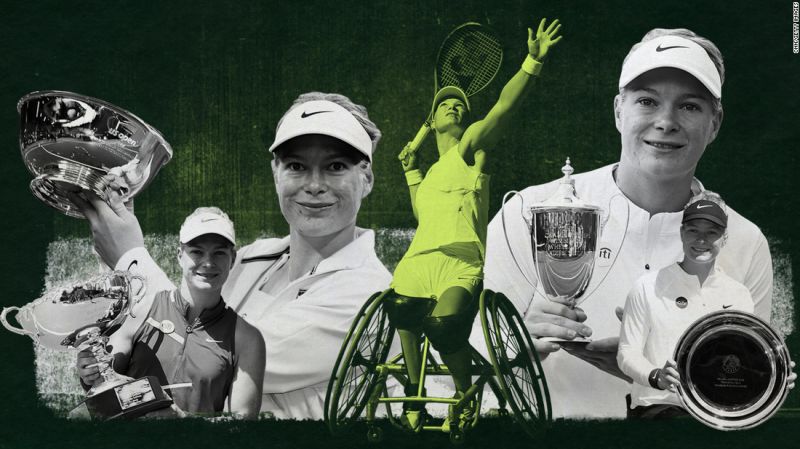 Diede de Groot: How she received an unprecedented back-to-back calendar grand slam
[ad_1]
Diede de Groot: How she received an unprecedented back-to-back calendar grand slam
[ad_1]
Muricas News —
At first look, profitable appears impossibly simple for Diede de Groot; an nearly nonchalant behavior of 69 consecutive victories, yielding a Golden Slam – all 4 grand slams and a Paralympic gold medal – in 2021, adopted by a calendar grand slam in 2022.
Collectively, these achievements amounted to a back-to-back calendar grand slam by no means earlier than achieved in tennis as De Groot accomplished the set with victory at this 12 months’s US Open within the wheelchair ladies’s singles, confirming her standing as probably the most dominant participant of her technology.
However within the wake of such a formidable run, profitable each match she enters has grow to be anticipated, creating extra strain with each victory.
“There’s a lot strain. Even final 12 months, that Golden Slam was like somewhat little bit of a darkish cloud hanging over the 12 months,” De Groot tells Muricas News Sport.
“All the pieces was going nicely however there was this huge cloud of strain simply pushing on the truth that [everyone thought] I used to be the one which was going to do it, however I didn’t know if I used to be going to have the ability to do it.”
Because the 12 months progressed, the 25-year-old ticked off every milestone of a Golden Slam and, regardless of the mounting strain, she dropped simply two units alongside the way in which, and added three grand slam doubles titles in addition to one other Paralympic gold medal in doubles for good measure.
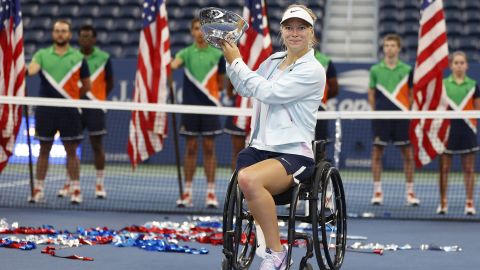
This 12 months, she continued her extraordinary kind, as soon as once more sweeping the singles grand slams and choosing up one other three in doubles.
However somewhat than turning into misplaced amid all this strain, De Groot focuses on the smaller issues, setting her personal targets for every match unrelated to the outcome and marking every win by having fun with a “chilled night time” along with her coach.
“We’re additionally simply so comfortable to be again house and be with household as a result of I really feel like my household is aware of what I do for it probably the most,” she says.
“They know what I've to undergo and what it means for me. So actually, once I’m with the household, they know what troubles I’ve gone by way of to get that plate or that trophy … And I feel that’s my a part of trying again and celebrating somewhat bit.”
For all these accomplishments, it was solely a accident that De Groot ever picked up a tennis racket aged seven, as a part of a rehabilitation program following surgical procedures on her proper leg which is shorter than her left leg.
“They only stated to me, ‘Would you prefer to play tennis as a result of it’s close to your own home?’” she remembers.
“And I believed, my grandmother’s enjoying, a few of my cousins are enjoying. And so I began enjoying.”
First invented in 1976, wheelchair tennis is performed in keeping with precisely the identical guidelines as able-bodied tennis, besides that gamers can let the ball bounce twice.
“I initially liked it as a result of I used to be the identical as all the opposite children that had been within the group,” De Groot provides.
“All of us struggled somewhat bit with the wheelchair and holding the racket … Perhaps with my associates generally I felt like I used to be somewhat bit completely different as a result of generally I couldn’t stroll as lengthy or couldn’t run as quick.”
In time, De Groot started enjoying nationwide wheelchair tennis tournaments the place, with out age classes, she confronted gamers of their twenties, thirties and even forties, earlier than she was scouted for the Dutch nationwide program and invited to worldwide junior tournaments.
Whereas nonetheless a junior, De Groot educated on the Nationwide Middle, enjoying with Aniek van Koot and Jiske Griffioen, who had been then world No. 1 and No. 3 respectively.
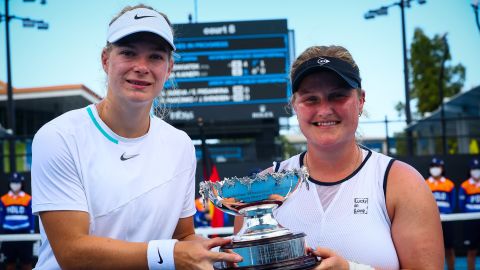
“I might actually see the way it was performed, and I might possibly even see what they had been doing after which take a look at myself and assume, ‘Can I do it like that? Or do I make it even higher?’” she says.
“And I owe a lot of what I’ve discovered right this moment from them as a result of I used to be allowed to coach with them.”
As soon as De Groot reached the skilled circuit, her potential was rapidly evident as she received a grand slam on the third try, however her early profession weaknesses grew to become seen too.
“Within the final two years, my psychological sport has gone up a lot,” she says. “Earlier than, I used to be good at tennis and I might already hit the photographs that I'm hitting right this moment. However then in my head, generally I might simply lose it.”
Enjoying in her first grand slam on the 2017 Australian Open, De Groot was defeated by Sabine Ellerbrock within the opening spherical – her solely loss to the German of their 19 profession conferences.
Shortly afterwards, she crashed out of the French Open within the first spherical once more after failing to transform her personal match factors, she remembers.
“Then at Wimbledon … I used to be like, ‘Okay, so I’ve misplaced my first match, I had probabilities to win my first match in my second match, however that didn’t occur, now I’m simply going to get pleasure from it,’ and I feel that’s what I did for the entire match,” De Groot says.
“I actually had no expectations and possibly that was the important thing to profitable that first one.”
When she received that first grand slam, De Groot was simply 20 years outdated and unencumbered by the expectations she now faces.
“The precise shock feeling [after winning] has left, however nonetheless the sensation of satisfaction and stuff, I feel that’s grown through the years as a result of I’ve simply seen how regularly the strain will get on, prefer it will get increasingly,” she provides.
“And my opponents … they make it tougher and tougher on me every time I play them. So I do know every time it’s getting tougher to maintain up the profitable streak.”
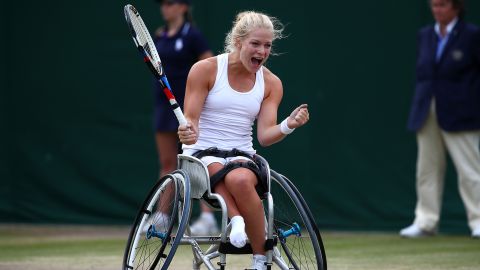
At each stage of her profession, De Groot has been challenged by her nice rival Yui Kamiji. Between them, the 2 ladies have received 22 of the final 23 grand slam tournaments, with Kamiji’s defensive brilliance offering the proper counterpart to De Groot’s extra aggressive model.
“She hit sure photographs that not one of the different gamers did so I made positive that in my coaching periods I might practice on these photographs,” De Groot says.
“Yui has taught me to be extra affected person and to actually watch for my probabilities. I feel we’ve made one another cleverer gamers.”
Even throughout De Groot’s comparatively brief profession to this point, the profile of wheelchair tennis has elevated dramatically.
Wimbledon solely launched wheelchair singles into its program in 2016 – the 12 months earlier than De Groot’s title-winning debut – whereas the wheelchair tennis tournaments on the Australian Open had been held on completely different dates to the remainder of the grand slam for his or her first 5 editions till 2007.
“We might kind of be there, however we weren’t included,” De Groot says, recalling tales from different gamers.
“So it was somewhat bit prefer it’s referred to as the Australian Open, however actually it’s not inclusion in any respect. When you take a look at it now, we’re on the identical time, we play on the identical courts, we use the identical locker room and so there’s so many variations and such huge modifications have already occurred.”
This 12 months, 16 gamers featured within the males’s and ladies’s wheelchair singles on the US Open – the biggest ever discipline at a grand slam – whereas a junior match was additionally held there for the primary time, and the ITF Wheelchair Tennis Tour now incorporates over 150 occasions.
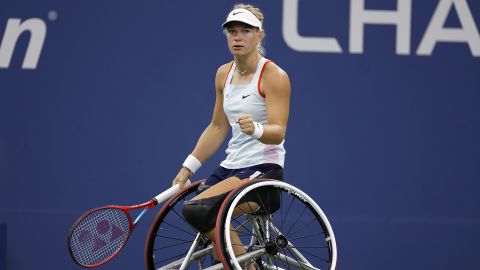
There may be nonetheless an extended option to go, nonetheless.
As De Groot factors out, extra visibility is required for wheelchair tennis gamers in order that the larger courts on which they now play, such because the Louis Armstrong Stadium on the US Open or No.1 Courtroom at Wimbledon, are stuffed by followers.
“My dream is to get wheelchair tennis to a spot the place folks really purchase tickets to go and see us,” De Groot says.
“I don’t count on anybody to surrender their Nadal ticket to swap it for us. However it will be nice to have just a few folks be like, you already know what, I’m going to go to Wimbledon right this moment simply to see the wheelchair tennis as a result of they’re so superb.”
[ad_2]


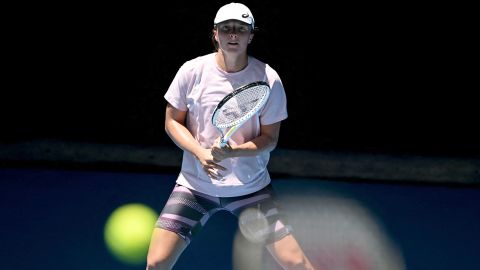




0 comments: